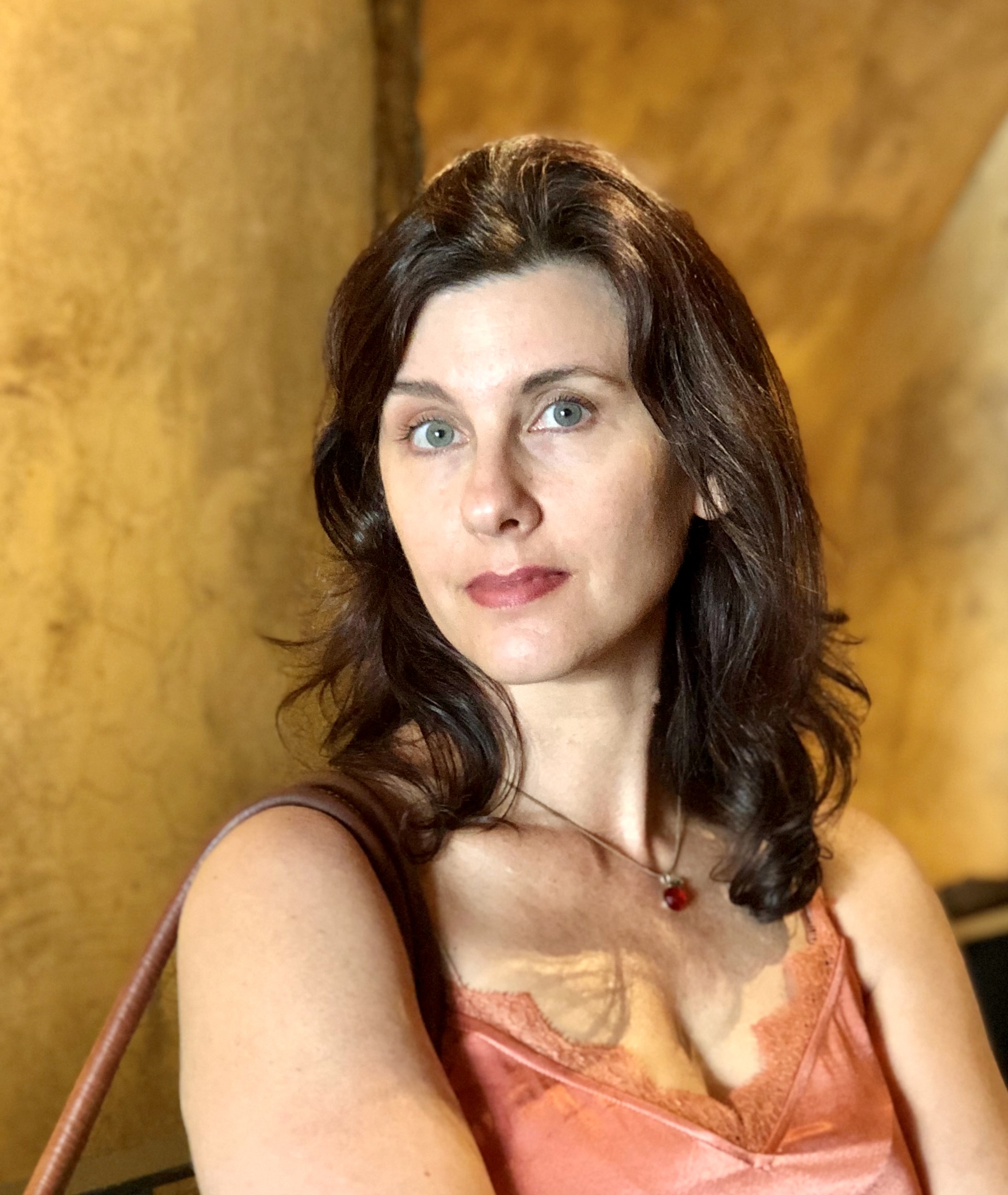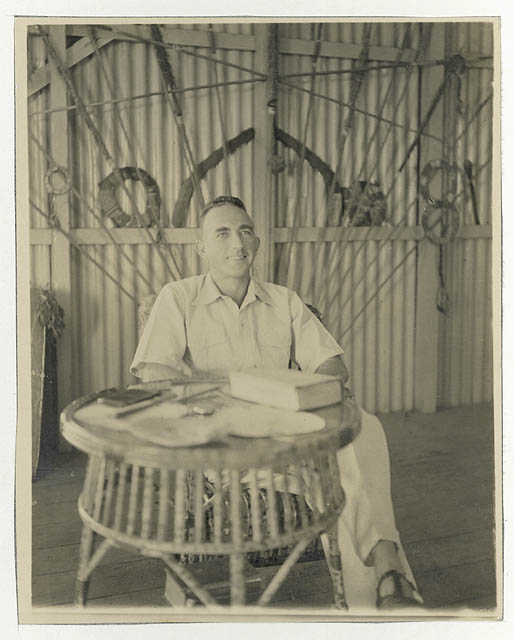
Naturally, I was thrilled and delighted when Stephen Carlton, the previous director of the Centre for Critical and Creative Writing (CCCW), told me I’d won the 2024 UQ Creative Writing Fellowship. As well as the prize money, which provides time to write, this wonderful fellowship has given me the chance to develop my play Xavier and Beatrice under the mentorship of Saffron Benner, one of Australia’s most respected dramaturgs. For a first-time playwright, that’s an extraordinary gift. Here, finally – after several years of research and drafting – was the opportunity to transform what began as a simple idea to write a play based the relationship between author Xavier Herbert (1901–1984) and Beatrice Davis (1909–1992), his editor, into a dynamic, stage-ready play with a raison d'être for contemporary audiences.
The inspiration to write a play about Herbert and Davis came out of the research I did for my doctoral thesis on the Australian ensemble home-front novel (which culminated in my own home-front novel Meet Me at Lennon’s (2019)). Xavier Herbert’s Soldiers’ Women (1962) was one of three novels I examined for my literature review (the other two were Come in Spinner (1952) by Dymphna Cusack and Florence James, and Time Out for Living (1995) by Estelle Pinney), which is how I discovered its complex and fraught publishing history spanning from the late-1940s to the early-1960s. At the heart of this history, and the part that interested me, was the multifaceted author-editor relationship between Herbert and Davis, which is documented in the many letters between them.

Xavier Herbert was one of Australia’s best-known authors of the 20th century, most famous for his two canonical works at the beginning and end of his career: Capricornia (1938) and Poor Fellow My Country (1975), which won the 1976 Miles Franklin Award. Such is the literary legacy of Capricornia that is was adapted into a stage play by Louis Nowra in 1988. Herbert was a contrary, some might say eccentric, and reclusive figure who lived from the late 1940s in Far North Queensland with his long-suffering, yet devoted, wife Sadie. He was also known for his outsized ego, and when he did venture down south, usually to promote his books, stories of his narcissistic grandiosity and bombast grew exponentially.
Beatrice Davis, known for her grace, style, and editorial diplomacy, was a revered editor at Angus and Robertson – Australia’s premier publishing firm from the 1880s to the 1970s – who edited the work of such Australian literary luminaries as Thea Astley and Hal Porter, among others. Her career spanned over forty years, from the 1930s through to the 1970s. And though she never thought of herself as a feminist, and indeed rallied against the trend toward non-sexist language, she was a successful career woman in an era when most women did not have careers outside the home, and was highly respected by authors, colleagues, and the Australian literary community alike. To this day, the annual Beatrice Davis Editorial Fellowship is awarded by the Australian Publishers Association to a senior editor undertaking a significant research project for the benefit of the Australian publishing industry.
Individually, both Herbert and Davis – remarkable characters in their own right – have cast long shadows over Australia’s literary landscape, but few know the story of their intimate, often fraught relationship: one was that was as personal as it was professional, and underscored by a deep affection for one another, and this was the story I wanted to tell.
The idea of writing a play about Herbert and Davis, centred around Herbert’s struggle to write Soldiers’ Women, his second major work after Capricornia, stayed with me after finishing my PhD, thought it took me a couple of years to act on the impulse. Then one day, in November 2019, I decided it was time to visit UQ’s Fryer Library to have look at the Sadie & Xavier Herbert Collection, which I knew contained a trove of letters written by Davis to Herbert during the 1950s. What I found there confirmed my hunch: here was a story, hidden away in this archives, begging to be told, and a stage play, I felt, was the ideal medium to do it.
That visit would become the first of several to the Fryer Library, and the beginning of a journey that also took me to the Mitchell Library in Sydney and the National Library in Canberra to access more letters – mostly from Herbert to Davis and others, such as A&R publisher, George Ferguson, and Herbert’s correspondence with the Commonwealth Literary Fund – as well as the Cairns Historical Society, and the Herbert’s former house, known as Sadie’s cottage, in Redlynch, near Cairns. I also read their respective biographies – Xavier Herbert: A Biography (1988) by Francis De Groen and A Certain Style: Beatrice Davis (2018) by Jacqueline Kent – to better understand their histories and personalities, and Craig Munroe’s Literary Lion Tamers (2021), in which he devotes a chapter to Herbert and Davis’s author-editor relationship.
From these letters and other primary and secondary sources, I pieced together a timeline of events starting from the late 1940s with Xavier and Sadie’s move to Far North Queensland. In late 1949, Davis took over as Herbert’s editor after his former publishing editor, Walter Cousins, suddenly died, and this is where the play begins. Herbert had begun work on Soldiers’ Women during the war, but the manuscript was a long way from being finished when Davis began working with him. Herbert struggled with writer’s block for many years, only to, finally, in 1956, turn in an unpublishable 340,000-word manuscript. It would be another six years, however, before Soldiers’ Women would be published in 1962, largely due to its salacious content – which would not get past the ‘wowserist’ censorship of the 1950s – and Herbert’s refusal to cut the manuscript to a manageable 120,000 words, or heed Davis’s, or anyone else’s, criticism of his overblown imagery and style. Meanwhile, Angus & Robertson was undergoing huge internal upheaval as its new managing director, Walter Burns, attempted to pivot Australia’s oldest and most respected publishing house to the become ‘Woolworths of the book trade’ by publishing only cheap paperbacks, and doing away with unprofitable literary novels and poetry.
Converting and condensing these messy, and not always linear, events, spanning twelve years, into a ninety-minute play was just one of the challenges that lay ahead. Another complication was that Herbert and Davis lived over 2,500 kilometres away from each other, only meeting in person once before the action of the play begins. Without face-to-face dialogue between the two characters, I wasn’t sure how I was going to bring their relationship dynamic alive on the stage The many letters between them are testament to the fact that most of their relationship, professional and personal, was conducted via correspondence. While the letters are detailed, and give fascinating insights into their characters, converting that detail into playable action and dialogue for the scene-driven medium of theatre would prove the most challenging aspect of the task ahead.
Despite these challenges, and my inexperience as a playwright, I wanted to give it go, and three years later I had a first draft, which, after invaluable feedback from my best friend – actor and director Frankie Savige – became a tighter, more solid second draft; however, it still wasn’t the play I wanted it to be. It needed something else – something to make it relevant to contemporary audiences – but I wasn’t sure how to achieve that. Enter the UQ Creative Writing Fellowship, which offered a mentorship with dramaturg Saffron Benner for playwriting projects. When the opportunity was opened to include casual academics at UQ, I jumped at the chance.
Five months into that process, a new draft is slowly emerging, under Saffron’s guidance, which has me thinking about the play and its characters, as well as its contemporary relevance, in a whole new light. Why this play? And why now? are two questions I keep returning to. Also, why engage with and platform a literary work most people have never heard of and even Herbert’s most ardent literary critics considered an artistic failure? A deeply misogynist failure at that. To answer those questions, I have been
returning to the Fryer Library to study Herbert’s ‘logbooks’, as he called them, where he documents his writing process during Soldiers’ Women, and a lot more beside, and have engaged a lot more the novel itself – something I largely avoided in the first draft, but which has proved a rich source of inspiration for the current draft, which I’ll write more about in my next post.
Dr Melanie Myers
